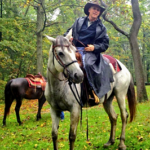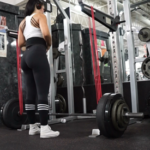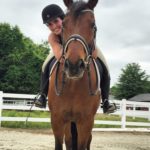Like many riders, I love traditional tack and turnout. Whether it’s an English rider’s monogrammed saddle pad or a Western rider’s inlaid browband, I appreciate how little details translate into an overall look of crispness and competence. This attitude was fostered early: I once had a riding teacher who encouraged students to have “a little respect for the sport” by pulling manes and wrapping legs.

I wonder sometimes what that teacher might make of how my children approach the sport of riding. Our boarding barn maintains a relaxed atmosphere, without a trainer to admonish the children to polish their boots or brass nameplates. My children love to ride, but they generally do it bareback. There are times that I miss the sharp look of a shining horse with a crisp white pad ready for schooling, but for the most part the laid-back approach suits.
I recently learned, however, that my 8-year-old daughter Macie is interested in good turnout—she just has her own ideas of what it should look like. This was revealed when she announced she wanted to paint our 20-year-old Paint mare, Sugar.
Paint a Paint? We had an Abbott and Costello “Who’s on first?” sort of conversation until I understood what she meant. She wanted to decorate Sugar as if she were a tribal horse readying for battle or maybe for an important hunt. I was thinking Paint horse; she meant paint the horse.
I think this started because Macie owns a doll named Kaya, a Nez Perce girl with long braids and a couple of horses. Kaya has been a springboard for Macie to learn about many different customs, and Sugar was to be her template for exploring a world of horses adorned with symbols of power and strength, symbols she finds far more intriguing than monograms on a saddle pad.
I did a little research of my own and found that many tribes painted horses with juice from berries, or made a paste from tree bark. Macie wanted to start crushing the raspberries I’d just bought at the grocery store, but I decided for our first venture we would stick with nontoxic finger paint.
Macie is very good with hair (Kaya again), and she braided Sugar’s mane not in the customary sense of a kid with an apronful of elastics at a horse show but more as someone who has pored over many a Robert Vavra calendar. Sugar stood still, basking in the attention and the results of an ample application of fly spray.
Once the braiding was complete, Macie stepped down from her step-stool and consulted her chart, a piece of paper with notes she was keeping close at hand. The finger paint came out, and as she worked, Macie told me what each symbol represented. Lightning for speed, a bear claw for strength, a bird foot for fleetness and grace. Sugar can be a little head shy,
so I was drafted to draw a ring of vision around her eye, and as I dragged my red-painted finger along her white blaze I could only figure that Macie had just drawn a symbol for patience on her somewhere.
The finished “canvas” was magnificent, with several colors embellishing Sugar’s ample barrel. There was a golden bolt of lightning on her shoulder, and her braids had been touched up with red so that they echoed the red bear claw and red spray of feathers on Sugar’s side. And that crimson circle around Sugar’s eye made her look, if anything, kinder and wiser than usual.
With her paints and imagination, Macie had evaded any strict replication of previous traditions. But as I looked at Sugar and the pleased artist and adorer at her side, I realized she had started her own: the tradition of the finger-painted horse.








